Features | Feast like nababs at these biryani places in Kathmandu
There’s something inexplicably addictive about the aroma and taste of biryani. Especially adapted for Nepali palates, biryani today is served in every other restaurant in Kathmandu. For the same, reason picking the right biryani place is easier said than done. Here are five eateries in the valley that won’t let you down.
Tasneem’s Kings Kitchen
With a team of Indian chefs preparing your favorite cuisine, head chef Tasneem Shahani brings to you over 12 varieties of Bombay’s authentic biryanis. Located in Pulchowk, the restaurant offers you unaltered taste of biryani from India.
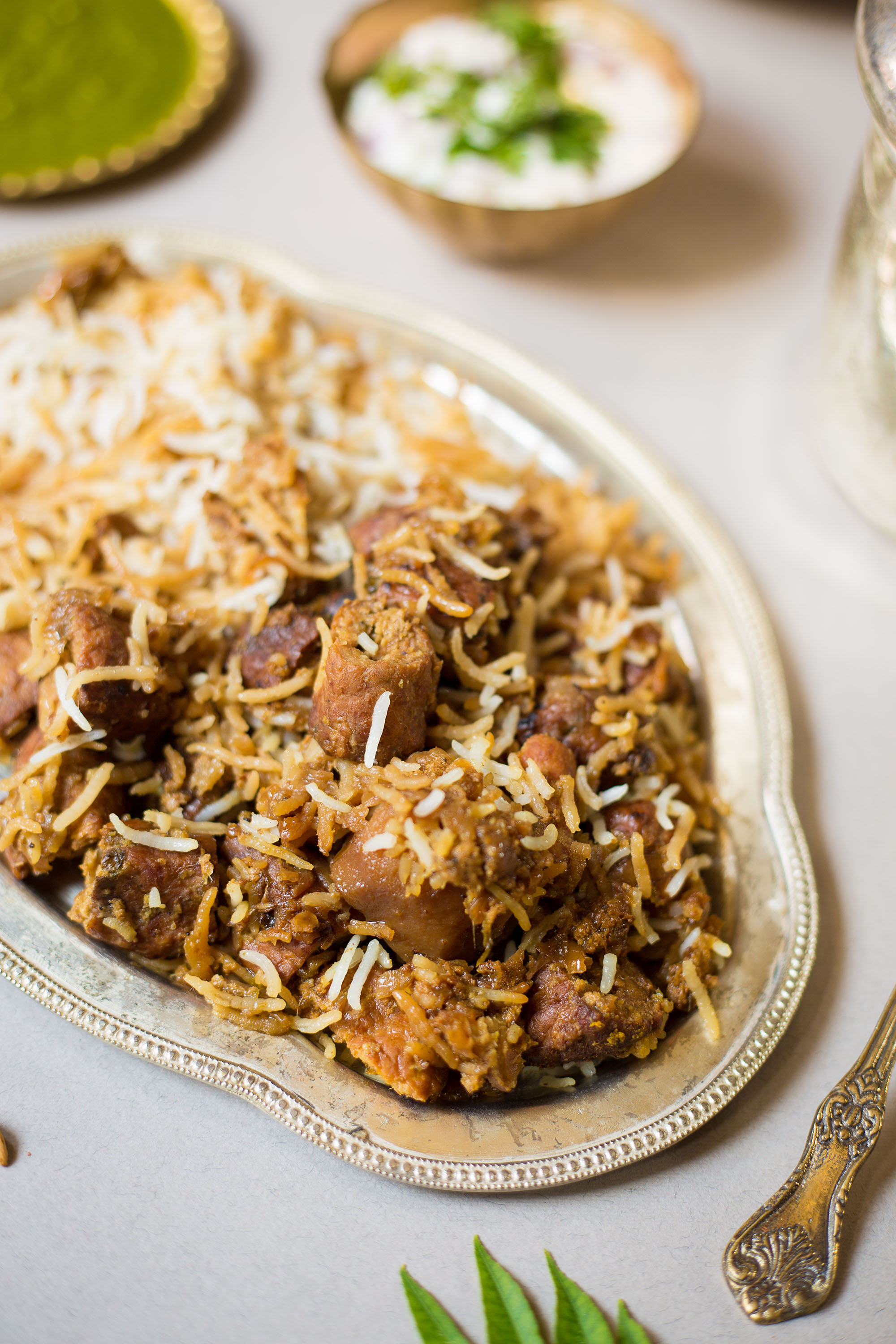
The cooking of dum biryani is slow, and thus the entire process takes three to four hours. Raw ghosht is tediously cooked in dum in order to bring out all its flavors. Special spices make the dish both aromatic and tasteful. Tasneem’s Kings Kitchen has plenty of options for both vegetarian and non-vegetarian food lovers. The menu ranges from regular biryani like chicken, mutton and veg, to chicken tikka biryani, prawn biryani, fish biryani, boneless fish biryani, and egg biryani.
“I have been in this business for over 15 years,” shares Shahani, who’s also the restaurant owner. With her expertise and a strong team of Indian chefs, Tasneem’s King’s Kitchen is here to give you the experience of an authentic Indian biryani.
Service Hours: 11am-9:30pm
Contact: 9801121212
Location: Pulchowk
Bollywood Biryani
Established in 2017, Bollywood Biryani is an Indian restaurant serving biryani recipes from Lucknow. The restaurant’s head chef grew up on halal cuisines, one of which was a biryani, and he wanted to start something similar in Kathmandu. With its menu offering over 10 varieties of biryani—chicken dum, chicken tikka, egg biryani, veg biryani, veg keema biryani, among others—Bollywood Biryani is a popular eatery among Sinamangal locals.
“Our biryani is adapted from Lucknow’s most popular recipes,” shares Prakash Lwagul, the restaurant manager. “We wanted to bring genuine taste and aroma of halal into Nepal.” And with a true Lucknowi cast of characters, the joint has a maintained a regular flow of customers.
One of its most popular biryanis is Special biryani, which is which is topped with tandoori specifically prepared for the dish. The special raita enhances the taste of spices and bring out all the flavors.
Service Hours: 7am-10pm
Contact: 9865992634
Location: Singamangal
Biryani Ghar
Biryani Ghar might have flown under your radar but make no mistake, it’s a place to be reckoned with. The restaurant brings to you secret family recipes based on Awadhi culinary techniques. Most recipes have been prepared by Sasik Iraqi, owner and occasional chef born to an Indian mother and a Nepali father.
Established in December of 2018, Biryani Ghar specializes in Dum Pukht Biryani, also known as slow-cooked biryani. The process of cooking and serving this cuisine ranges from 90 minutes to two hours as raw rice is boiled in chicken broth, whole spices and ground onion. Subtle in spice-combo and sweet and salty in taste, the biryanis come in three different varieties: veg, chicken and mutton. If want more spice, you can easily request red or green chutney to go with the kebab.
So if you’re looking for a new taste in biryani—a blend of Lucknow, Awadhi and Nepalgunj—Biryani Ghar should be your next stop.
Service Hours: 11am-8:30pm
Contact: 9801915895
Location: Gairidhara
Biryani Moments
Bringing you one of the largest menus in the city is Biryani Moments with its 20 varieties of biryani, ranging from regular chicken and mutton versions to Chicken Sufiyani, Mutton Zafrani Shahi Biryani, Chicken Sufiyani Shahi, Premium Veg, and many more. Biryani Moments only does deliveries and takeaways and the amount of food you order depends on your order, which may be one of three kinds: one serving, two servings and family pack (four servings).
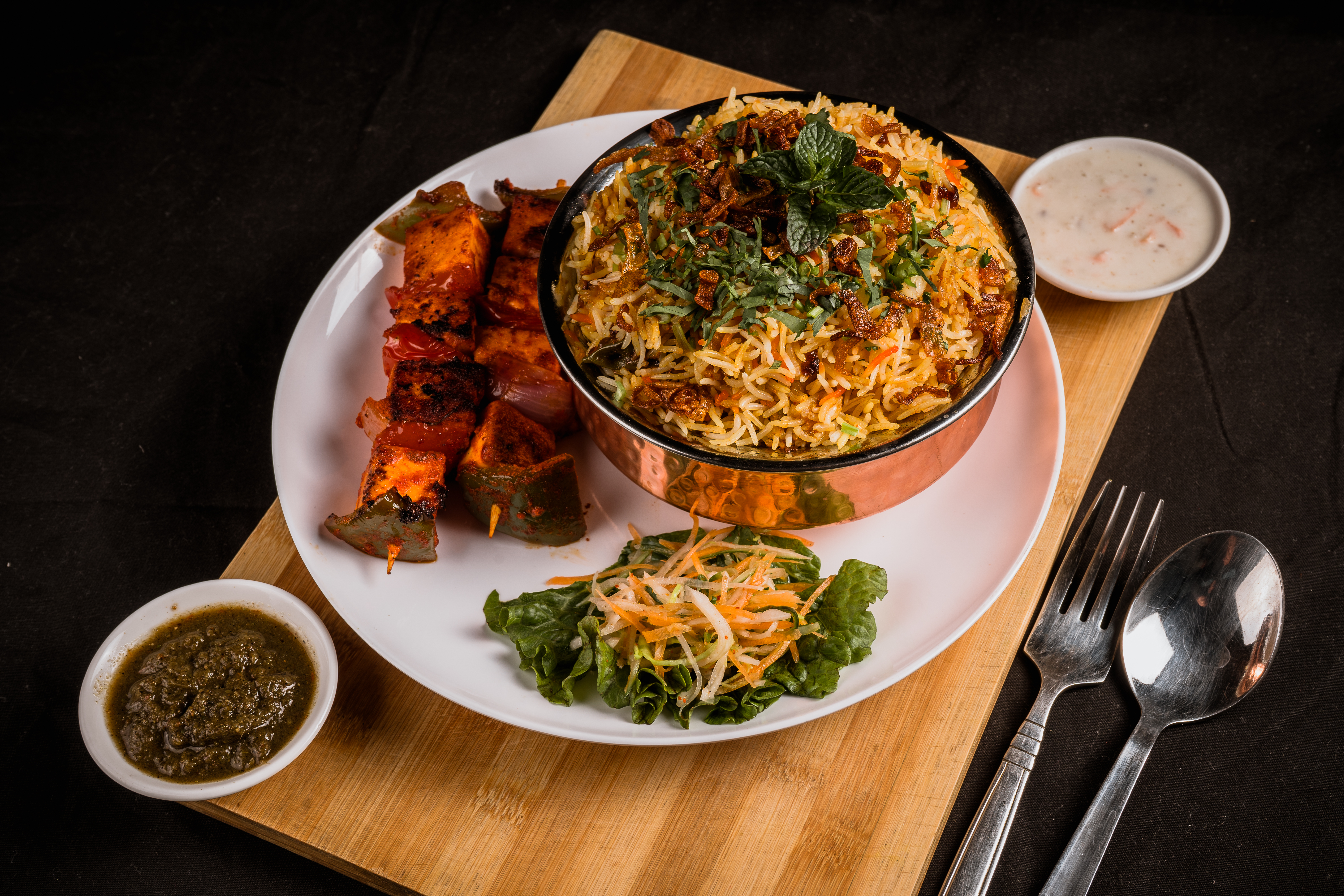
One serving is usually packed in aluminum foil while more than one comes in clay pots. Each serving comes with raita, chutney and green salad slices. The restaurant is one of the few that offer substantial biryani options for both vegetarians and non-vegetarian food lovers.
Service Hours: Open 24 hours
Contact: 01-5906111
Biryani Adda
Established right before the 2020 lockdown, the future of Biryani Adda seemed uncertain for a while. But owners Nabaraj Karki, Rajan Khanal and Rabin Pandey pushed through, offering home deliveries and takeaways from their restaurant. And today, Biryani Adda is already one of the established names.
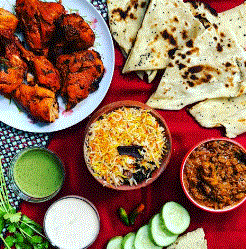
True to its name, the restaurant offers six varieties of biryanis—veg, chicken, mutton, prawn, fish and its Special biryani. The Special is flavored with akbare and served with a unique mango chutney. All varieties come in a clay matka, with a bowl of raita and papads on the side. The restaurant’s rice is imported and it specializes in the Hyderabadi herbs. Most customers order chicken and mutton biryani but the Special one is the beloved of regular visitors.
“Our rice isn’t over-spiced or thoroughly dipped in oil; we believe in serving authentic food,” co-owner Nabaraj Karki tells ApEx. “We’ve also tweaked the original recipes to tailor the cuisine to Nepali taste.” The restaurant has branches in both Baneswor and Chandol.
Service Hours: 9am-8:45pm
Contact: 01-4425261
Location: Baneswor, Chandol
A musical letter on your home screen
The fourth edition of the annual “Echoes in the Valley” (EITV) music festival started on April 10 with this year’s theme ‘A Letter Home’, featuring Nepali musicians living abroad. Usually, EITV is a one-day music festival, but due to the pandemic, the organizers have turned it into a year-long virtual event.
The EITV festival has four programs starting this year: Confluence, EchoesMusicFund, Kaleidoscope, and Opener. EchoesMusicFund is sponsoring two candidates for music education, while Kaleidoscope offers a six-month long mentorship program for new Nepali artists. Likewise, under Confluence one can have engaging discussions on music with experts on the field and finally, the Opener allows emerging musicians to perform onstage and be exposed to larger audience.
For more information, ApEx sat down with EITV’s festival director, Bhushan Shilpakar. Excerpts:
How did this festival first come about?
Rizu Tuladhar and Sunit Kansakar from the band KantaDabDab are the festival’s creators and co-founders. Although Nepali music is diverse, not a single music festival is dedicated to traditional and folk music. They saw this as an opportunity to start something new and I jumped in right away when they came to me to brainstorm this idea in 2016. After the launch, our friends from Kutumba, Night and Phatcowlee joined forces in 2019.
What does a typical ETIV music festival look like?
In the three past editions of our festival, we transformed small neighborhoods into grand stages for musical conversations. In 2020, because of the pandemic, we cancelled our plans to have the festival in Kirtipur. But this year, we are changing our format and featuring artists/bands based outside Nepal. Hence this year’s theme is ‘A Letter Home,’ where each performance is followed by a candid conversation with the featured artist.
How much will it cost to get invited to the virtual festival?
Everything is free. A free dose of music and more from the safety and comfort of your homes. You just need to follow our Facebook, YouTube and Instagram pages.
Who will be featured in this year’s festival?
We have made sure that young musicians, especially those who are learning music at schools or are just starting to get into the scene, are given a chance to perform at our festival, and are able to share the stage with other more ‘well known’ musicians.
Just because it’s virtual doesn’t mean we will stop that tradition. We made an open call for applications for Opener and we selected nine artists/bands to kick start the festival with their performances. Aside from that, we have a great lineup this year. Some of them are: Amazumi (Belgium), Bartika Eam Rai (US), Chepang (US), Cloverleaves (UK/Nepal), Dheeraj Shrestha (Australia), Diwas Gurung (US), Kathmandinki (Finland), Sanskriti Shrestha (Norway), Shreya Rai (UK), Shristi (US/Nepal), Shubha G (UK), Shyam Nepali (US), The Heart of Nepal (US), Topi (US) and Wayam (Belgium/Nepal).
What kind of discussions will you have under Confluence?
This was a component we added in 2019, where we discuss important aspects of music. For the discussion we gather stakeholders including musicians, music educators, students, and policy makers. Confluence will be held under the theme of music rights and artistic freedom. There will be a keynote speaker, panel discussions and an open floor, everything would be live online. We will call for participation starting the second half of this year.
Will the festival be live-streamed like a concert or be recorded and made available only on YouTube?
We want to provide seamless entertainment to our audiences. Some band members are not in the same cities or country, so we need to keep in mind issues like time differences between artists/bands and the interviewers for the conversations, fluctuating internet access, power cuts, and other unforeseen glitches, so we decided to have all performances and conversations pre-recorded and premiered on respective dates.
Can you elaborate on EchoesMusicFund and Kaleidoscope scholarships?
We are always asking ourselves, how can we make things better or easier for young musicians, who simply love music but may have difficulties to continue pursuing it? For EchoesMusicFund this year we have collaborated with Kathmandu’s two finest music institutes—Kathmandu University Department of Music and Kathmandu Jazz Conservatory. They will pick two students who will receive scholarships on a need basis.
Kaleidoscope is a six-month-long fellowship program designed for emerging musicians that includes mentorship, musical research, exclusive artist residency in Banepa, public performances, professional studio recording time, and the experience of making a music video with the industry’s best. We will do an open call for this program before the first half of 2021.
When you say you’re only featuring Nepali artists living abroad, does that apply only to Openers or to all programs included in your festival?
We were expecting only Nepali artists living in Nepal to apply for Openers but PSNOBS applied from the UK. So we selected them, the rest are all from Kathmandu.
We admit we have our shortcomings. One of the things we could have done better was to reach out to more artists from all over Nepal and not only Kathmandu. We are constantly learning with every edition. Next year, if the pandemic is over and everything goes according to plan, we will have the most versatile show we have done till date.
Neema Academy: Making eLearning fun
Since Covid-19 took the world by storm, virtual learning has evolved from a vague concept to a hard reality for the global education enterprises. Schools in Nepal have banked on international platforms like Zoom and Google Classroom to conduct daily lessons. At the same time, the year 2020 also shed light on some Nepali eLearning apps—one of being Neema Academy.
It’s an online portal with user-friendly interface that gives students and teachers access to countless study materials including course plans, syllabuses, chapter explanations in text and video formats, tests, quizzes, live classes and pre-made worksheets. The goal is to establish trust in eLearning by bringing quality and affordable education to all.
It all started when Neema Publication, a popular publishing house in Kathmandu, sought to digitize its products. Nischal Pradhan, the son of the publication’s owner, reached out to Neha Joshi who had experience in the digital field. The initial idea was to publish ebooks. But they soon realized digital learning provided an even bigger market, and the Neema Academy was born.
Officially launched in February 2020, courses are available from Grade I to X for now on the Play Store app. Upon its installation, users need to create an account and specify whether they’re a learner or a student.
If you’re a student, you must pick a grade and the eLearning app offers you guides on different subjects based on your year. You’ll also have access to chapter revisions, practice questions, quizzes and tests on the completion of each chapter.
If you sign up as an instructor, the app will first need to approve you. That done, aside from the same access as students, you will also be allowed to create your own syllabus and work schedules. You can invite your students into a live classroom, share your screen with them and add presentations, videos and worksheets of your own to the lessons that are already available in the app. If you don’t want to add on any pre-made lessons, a separate space will be made available to start your lessons from scratch. While this is targeted mostly at schoolteachers, it’s as useful for tutors who haven’t been able to continue their jobs during the pandemic.

Neha Joshi (co-founder, Neema Academy)
In fact, it was during the 2020 lockdown that Neema Academy achieved its biggest success, with schools signing up for the courses and independent students looking for free revision classes.
As the company plans its expansion the app will no longer be free. Starting Nepali New Year, Neema Academy will charge fees from all users across the board.
“Every content uploaded on the app is cross-checked,” says Neha Joshi, the company co-founder. “Study materials are true to the original books. And the quizzes, worksheets and video lessons that come with the purchase are made by teachers and experts in our office.” The offerings don’t end there. On the app, independent students can leave queries on subjects they’re confused about and available teachers at head office will answer them.
The courses aren’t limited to quizzes or theoretical videos. Many lessons and revision sections include image sequences, 3D and 2D cartoon videos, educational games and practice modes. “It isn’t just about establishing a good eLearning place,” Joshi shares. “We also want to make learning fun for children. Our education system relies mostly on theory memorization rather than its practice. By contrast, students of all age groups enjoy our practical methods of teaching.”
If you’re an instructor teaching many children at the same time, you can allow them to play these games or complete a worksheet and check their scores at the end to see how each is faring in the online class. The analytics section allows instructors to tailor their class according to student performances.
Joshi says most of their resources are dedicated to building a thorough guide for students appearing for SEE . “But we’re also brainstorming kindergarten courses,” she says. For +2 students, courses have been made only for Accounts and Mass Communication. As other subjects are comparatively more technical and require greater resources, Neema Academy is waiting for the right time to launch them.
In terms of prices, there are three packages on offer: a three-month package, a six-month package, and a one-year package. The prices are cheapest for students of Grade I, and increase higher up the grade level . Even though the app is no longer free, Joshi assures that it will be affordable for all.
“The content you subscribe to once will be available to you even offline,” she says. “So even if you take that phone to a rural place, you will carry our lessons with you.”
As our education will rely more and more on eLearning, our educators and publishers can be expected to create more and more learning products catered to local needs.
Five delicious dosa places in Kathmandu
A quintessential South-Indian cuisine, dosa has become a mandatory item for Indian-style vegetarian restaurants in the town owing to its popularity among Nepali restaurant-goers, not to mention among the many Indian tourists and foreigners who want a taste of India in Nepal. Finding an authentic taste, and the best combination of dosa and sambar, might be tricky though.
Here are five places that give you the best dosa experience in Kathmandu.
Pawan Sweets
Service Hours: 9am-8pm
Contact: 01-4252165
Location: Durbarmarg, Battisputali
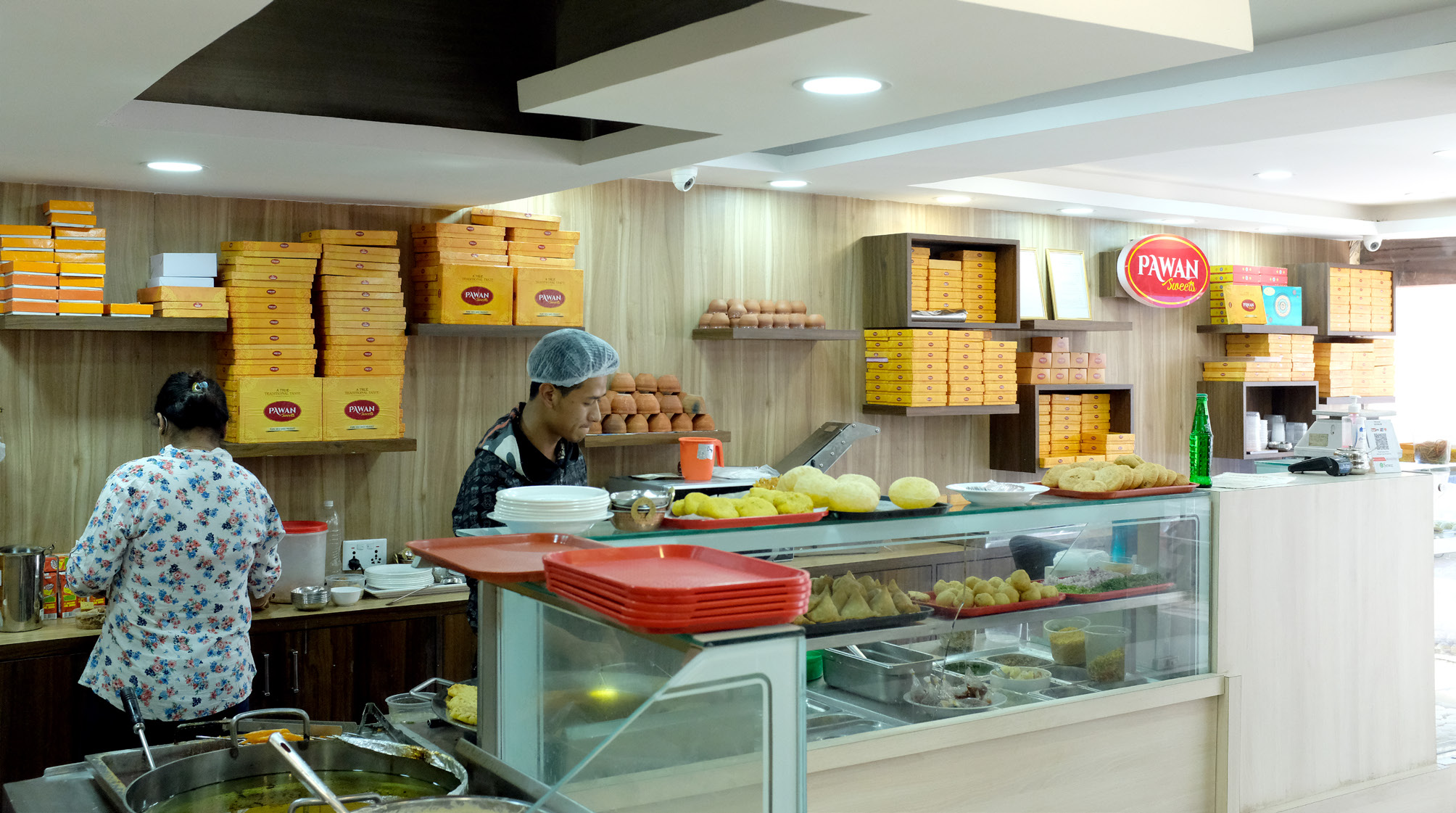
Even though the restaurant was established only in 2019, Pawan Sweets has already made a mark among Indian food lovers of Kathmandu. With branches in Durbarmarg and Battisputali, Pawan Sweets boasts of authentic Indian chefs who offer 10 varieties of dosas. The highlights of its menu: plain, butter masala, paneer masala, pizza, and pepper cheese masala dosas.
It is also famous for its Bahubali dosa, which is almost the size of a table and can feed numerous people at a time. Another signature dish is the Pawan Special dosa that prioritizes the taste of dry fruits in the cuisine along with a secret topping. Meanwhile, masala dosa and the Pawan Special dosas are “fan favorites”.
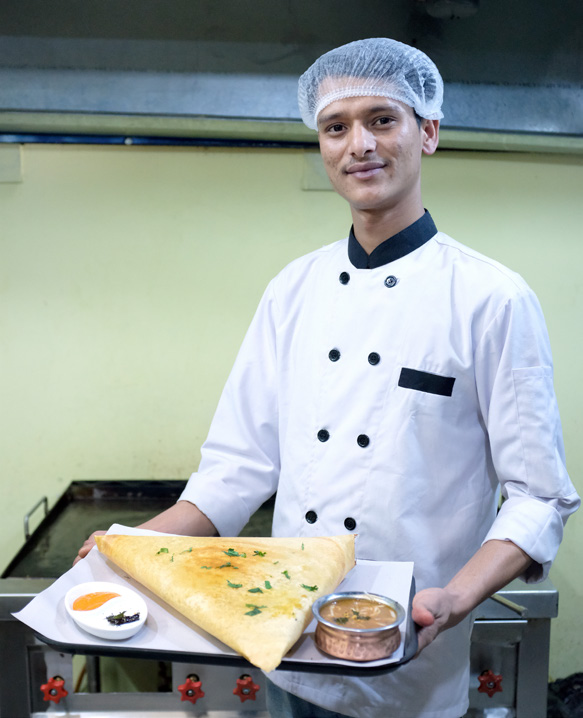
“Our Sambar is well-loved,” owner Binod Devkota says. “We use fresh vegetables to make it. Seasonal ingredients are usually stocked. And because of that the taste of the sambar is always consistent, no matter the month.” The dosas are offered in both cylindrical and triangular shapes, depending on the order.
Nandan Food Nepal
Service Hours: 8:30am-8pm
Contact: 01-4241498
Location: New Road
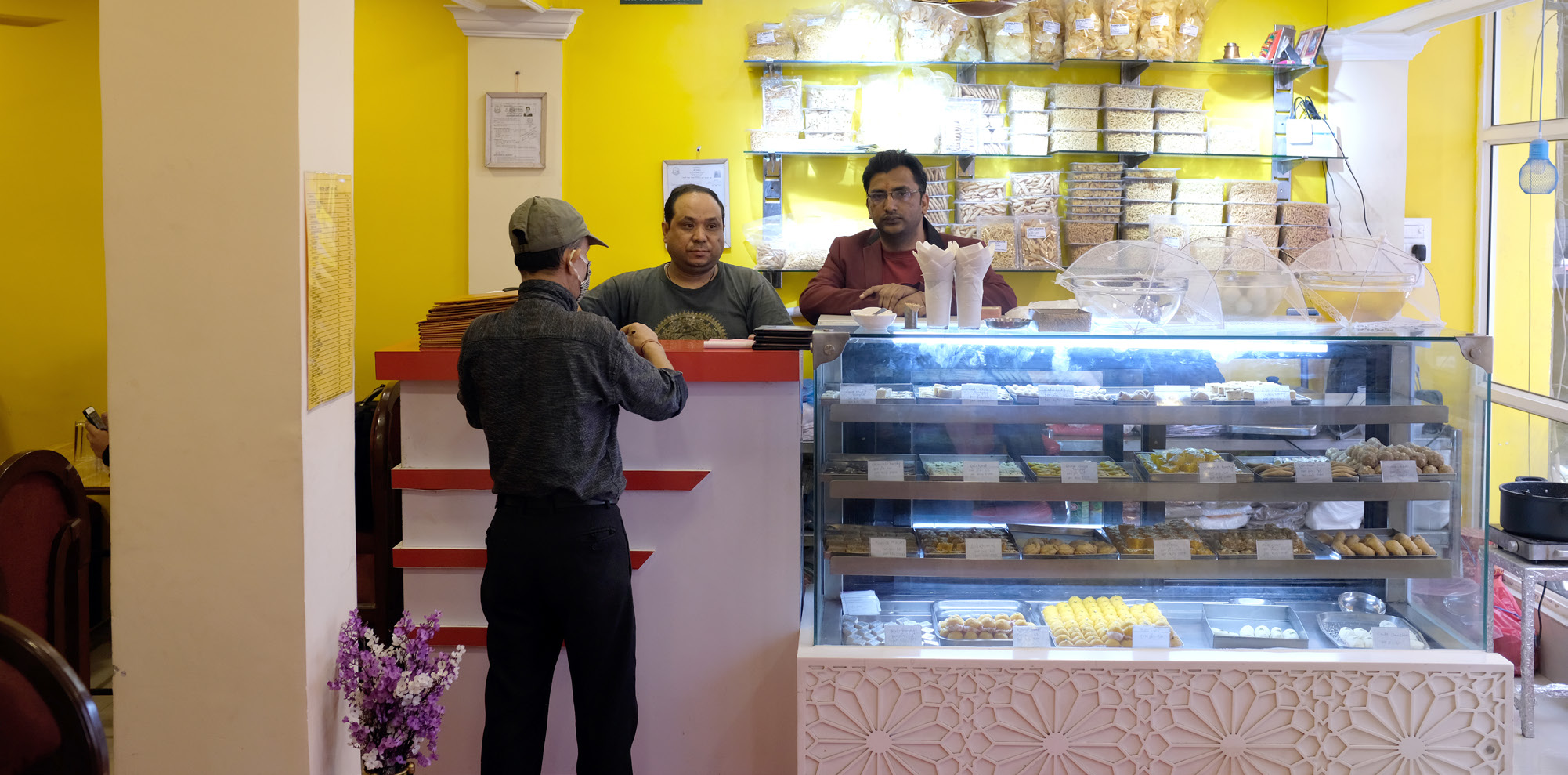
Nandan Food Nepal in Pyukha Marg, New Road, has been making dosas for almost 29 years. At the start, they brought chefs from South India to give dosa-lovers an authentic taste of the dish, and their legacy continues. Trained Indian chefs today bring to you more than six varieties of dosas and an array of brilliant South Indian snacks.
“Most of our clients opt for our Special dosa,” says Bimal Thapa, who’s been the manager of the restaurant for past 27 years. “The Special dosa uses extra ingredients like potato and dry fruits. Customers who’ve tried it once usually order it next time also.”
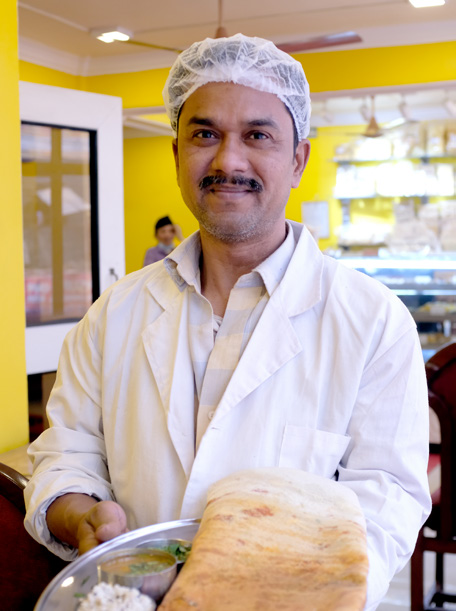
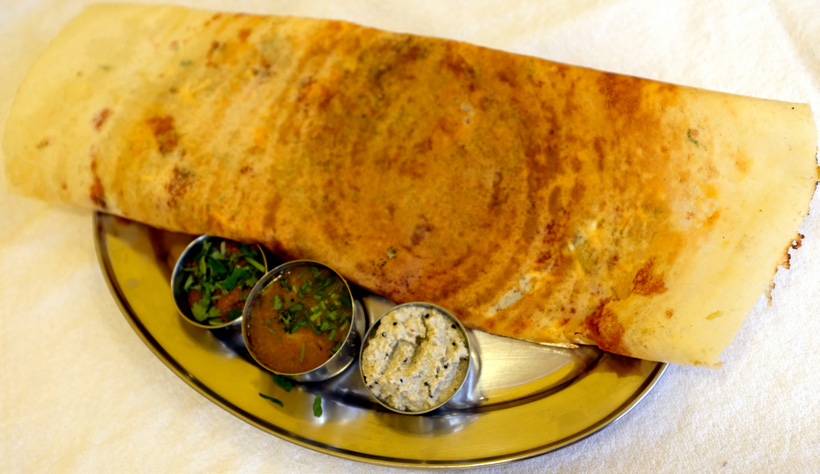
Its South Indian sambar with a mixture of fresh vegetables and grinded lentils is equally beloved. The dosas are long and cylindrical, perfected with years of expertise and tailor-made for Nepali palates, making them among the best in Kathmandu.
Gupta Bhojanalaya
Service Hours: 7:30am-9:30pm
Contact: 01-4248205
Location: Chhetrapati
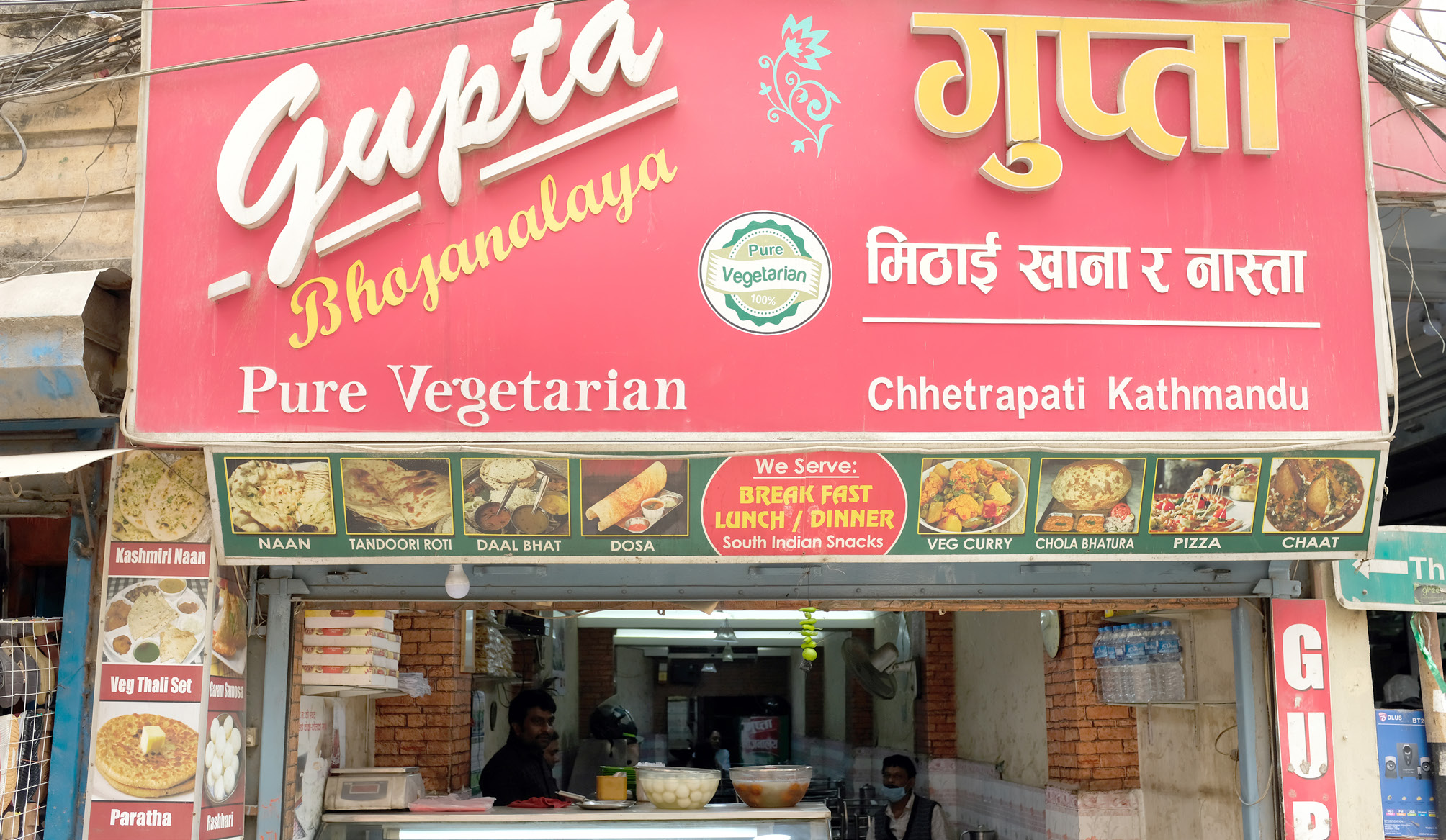
Another restaurant under foodies’ radar for the past 20 years is Gupta Bhojanalaya. Extremely popular among locals and students in the area for affordable and delicious foods, this bustling restaurant offers dosas between Rs 150 to Rs 300. For dosa-lovers, the restaurant currently has eight varieties along with sweet and sour sambar. Like others, Gupta Bhojanalaya uses dry fruits to make their Gupta special. Mushrooms and potatoes are used to give customers “the best dosa-experience”.
“Masala dosa is the bestseller,” says Sunil Gupta, the restaurant owner. “The dish sits well on Nepali taste-buds and our prices are also reasonable.” The dosas come not just in cylindrical shapes but also in unique cone, plate-fit shapes.
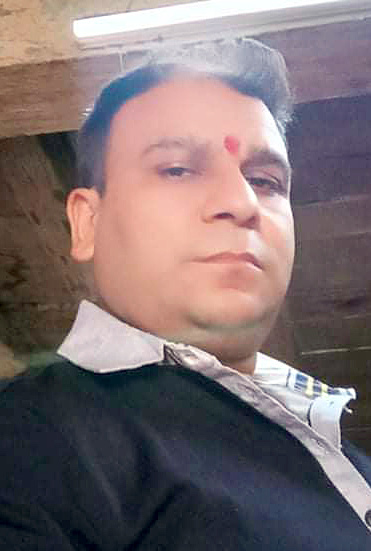
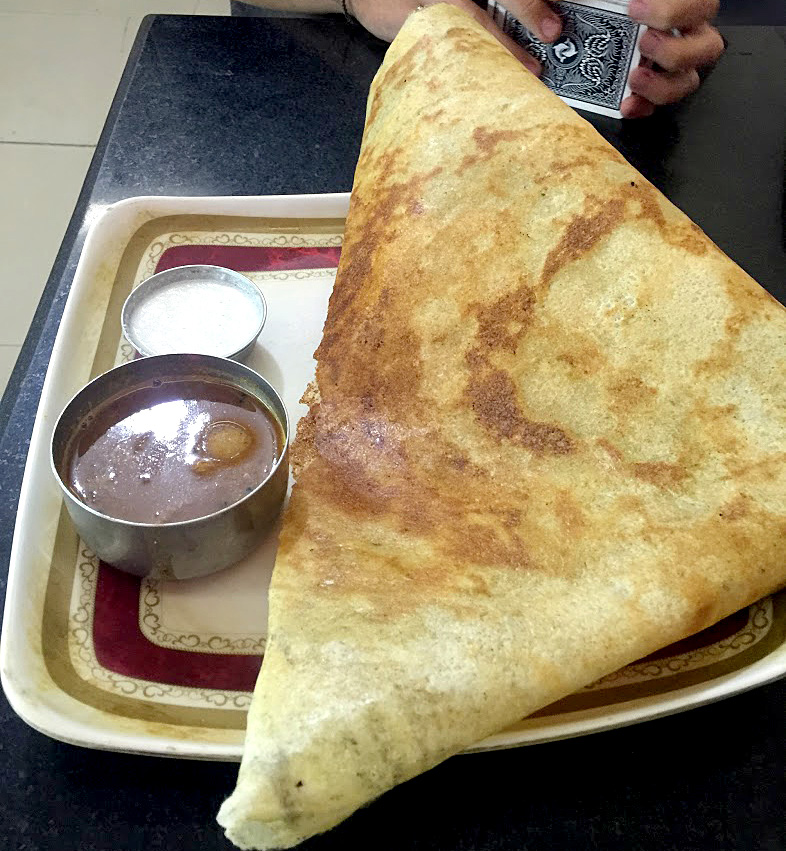
Located at Chhetrapati Chowk, Gupta Bhojanalaya right now has only Nepali chefs cooking South Indian dishes. But that doesn’t mean it compromises on service or dosas.
Tip Top
Service Hours: 10am-7pm
Contact Info: 01-5544735
Location: Kuleshwor, Lagankhel, Maharajgunj, Gyaneshwor
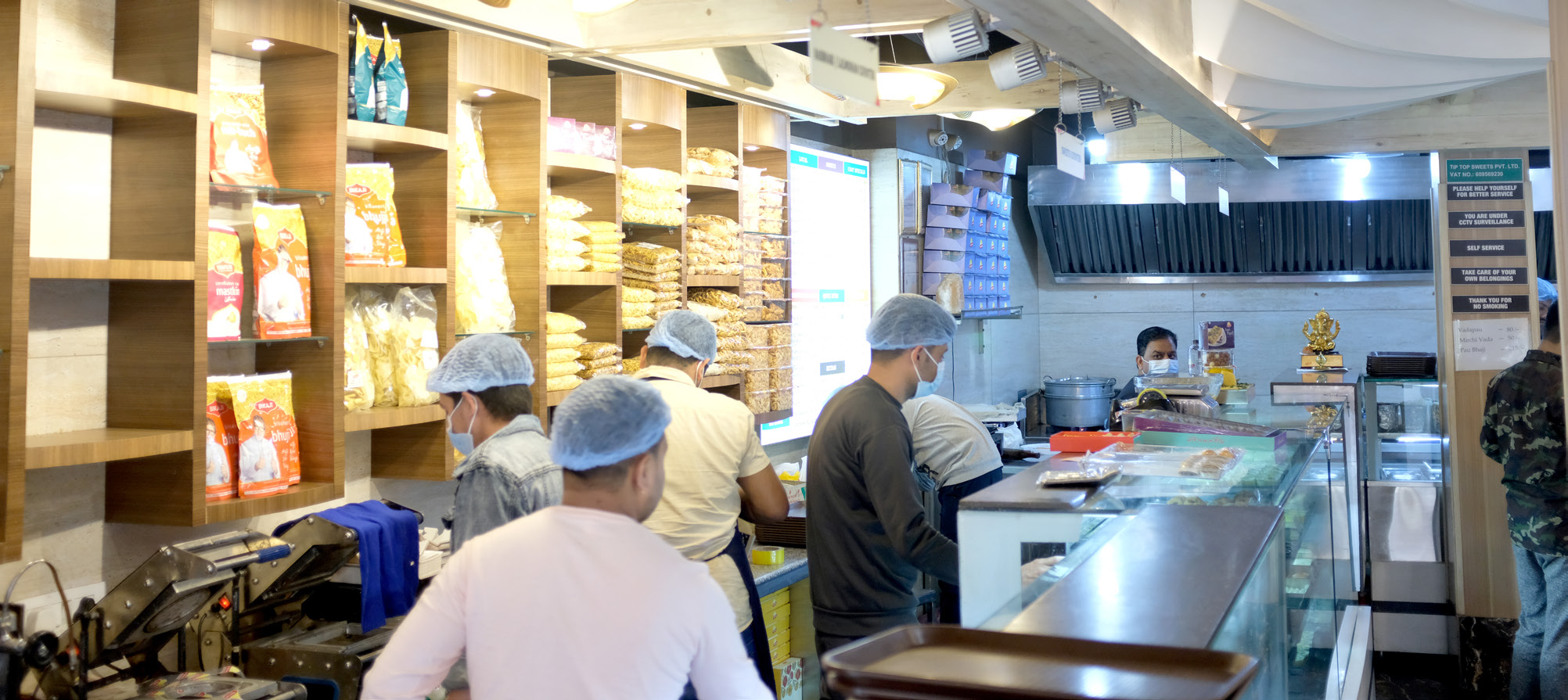
Nestled in a tiny New Road alley, Tip Top is a household name for Kathmandu’s samosa lovers. But many don’t know that for the past several years, it’s also been serving dosas from its branches in Kuleshwor, Lagankhel and Maharajgunj.
“While we’ve stayed true to our dishes’ South-Indian origins, we’ve also made sure some dishes are suited to Nepali palates,” shares Dinesh Agrawal, manager of the restaurant chain. So, even though its masala dosas have been slightly modified, it continues to be savored up by Nepali and Indian customers alike. If you’re looking for authentic South Indian taste, the restaurant also has seven other varieties of dosas to choose from.
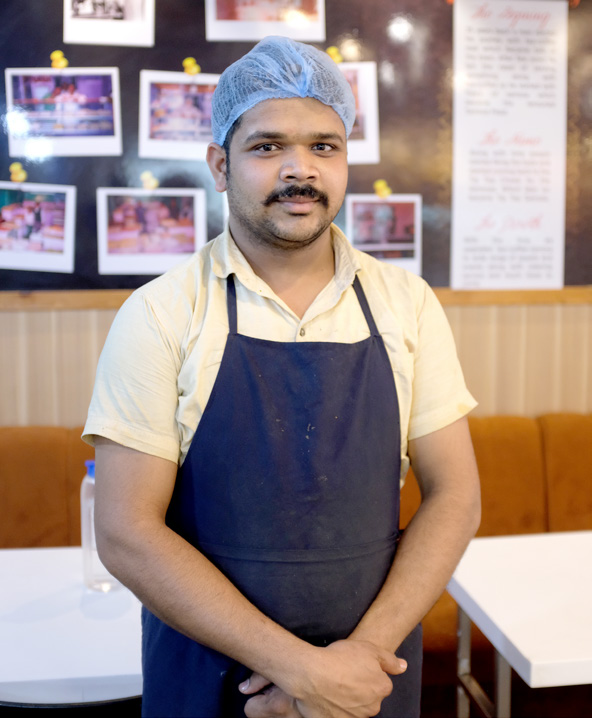
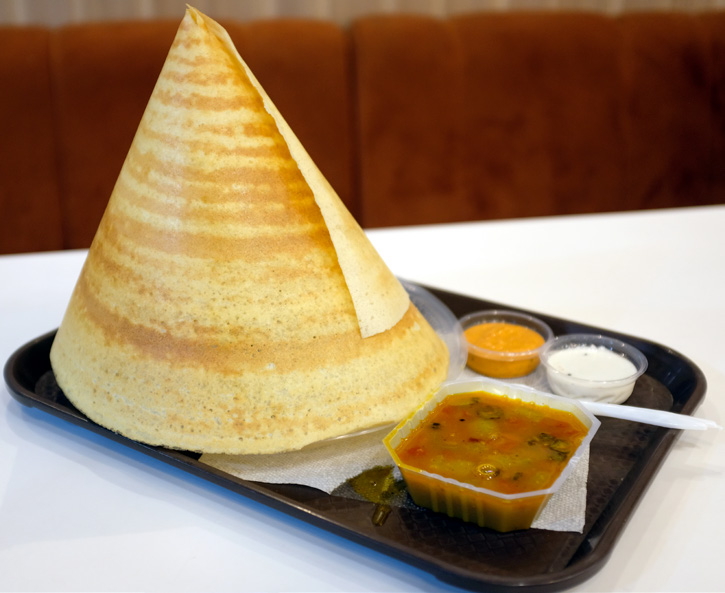
The crispy dosas, priced between Rs 240 to Rs 300, are served with veggie sambar, coconut chutney, and onion chutney. With an additional outlet planned at Gyaneshwor, you should be able to easily access Tip Top dosas easily, wherever you are in town.
Coconut Restaurant
Service Hours: 7am-7pm
Contact Info: 9813335420
Location: Bouddha
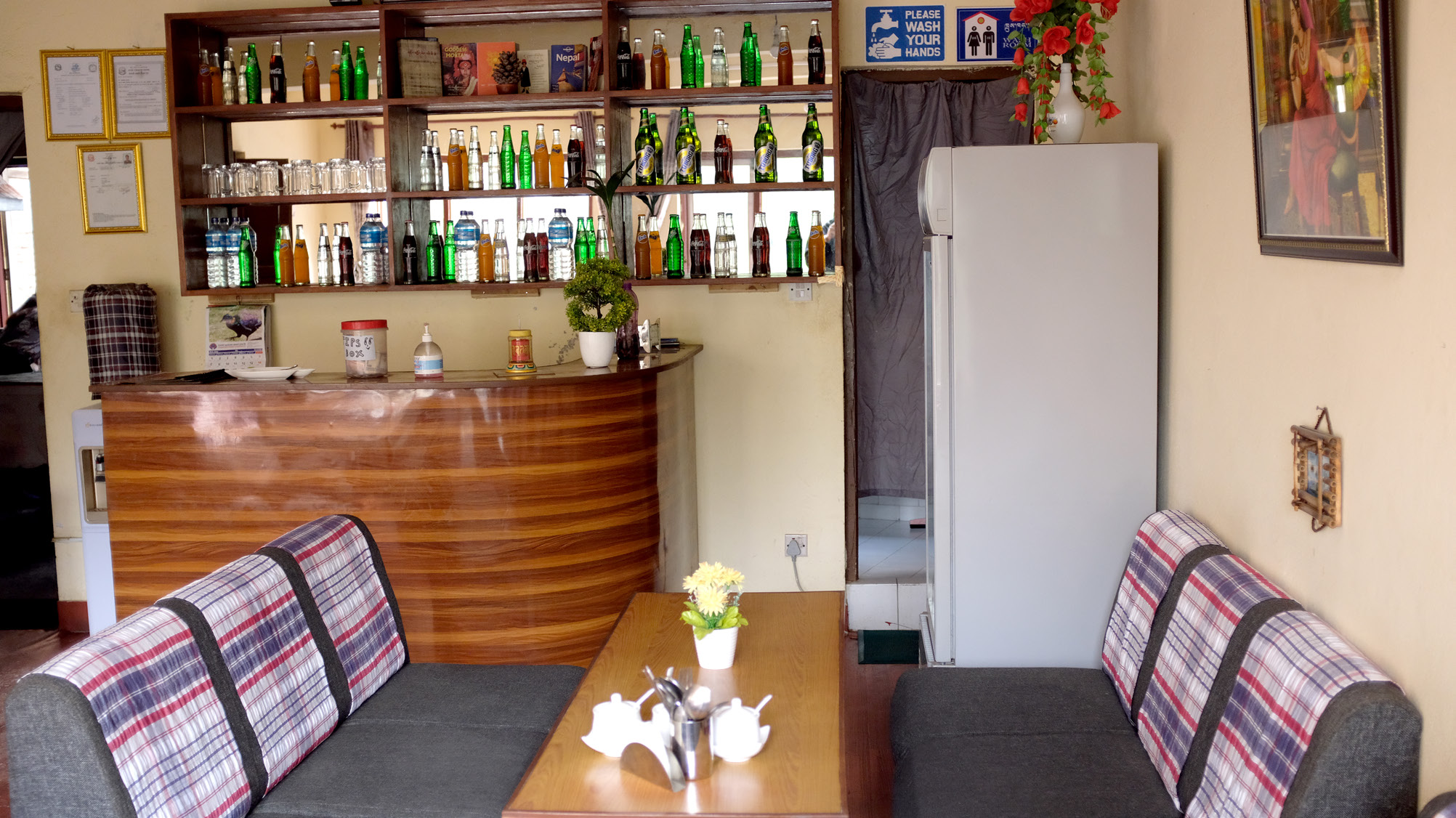
Within two minutes’ walking distance from Boudha Stupa and a few meters from Himalayan Java is Coconut Restaurant. The South Indian eatery is bang in the middle of the UNESCO World Heritage site crowded with all sorts of restaurants. Finding this particular restaurant might be hard, but not impossible, if you ask around the area and follow Google Map.
The restaurant offers six varieties of dosas—masala, plain, egg, onion, butter, and set dosa—served with coconut chutney and dal sambar. If you visit early in the morning, the restaurant also serves dosa with potato sambar. Customers enjoy having the dosas with chana curry cooked in coconut oil—a side dish that you need to pay for separately—to highlight the taste of coconut chutney.
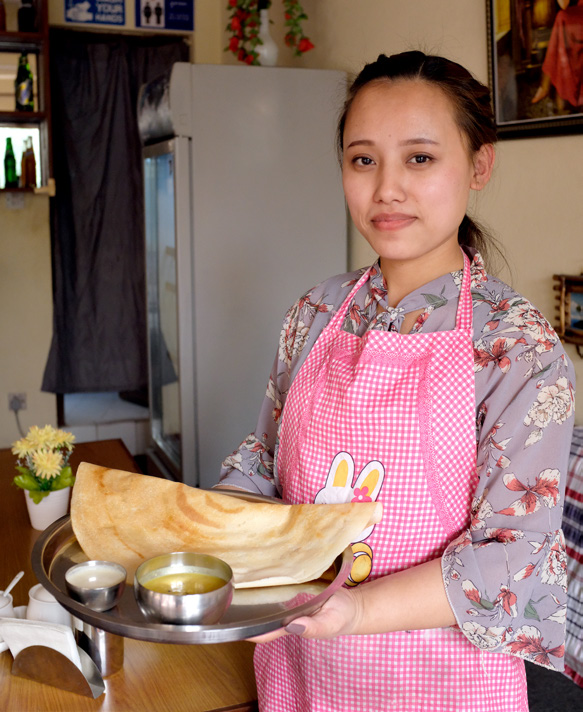
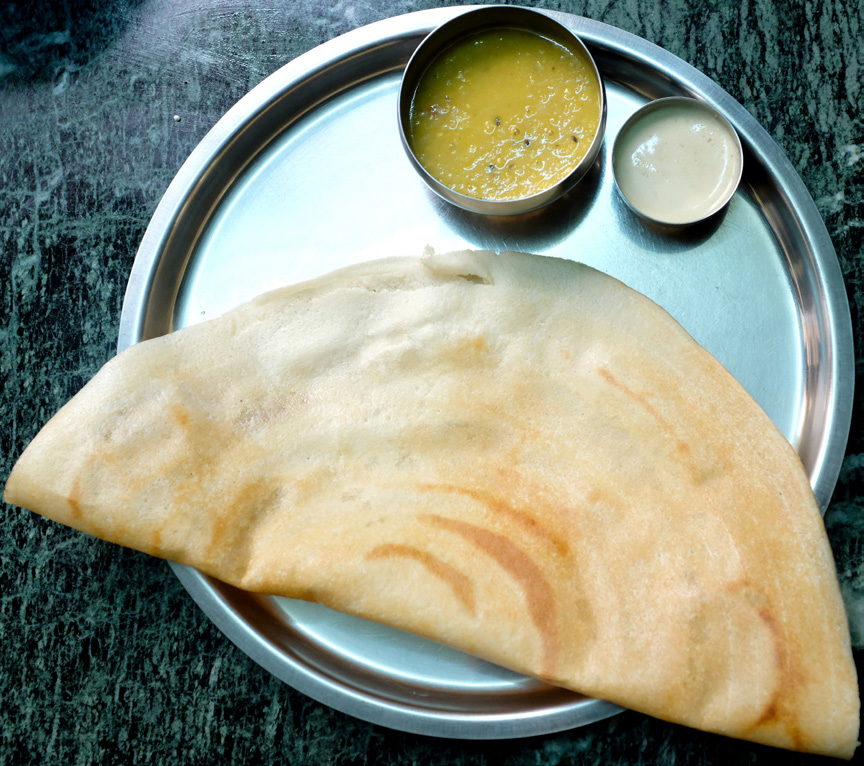
With South-Indian chefs in the kitchen, Coconut Restaurant tries its best to retain the authentic taste and quality of its dosas.
Sabda Sangram gets Nepal rapping online
Nita Pradhananga always dreamt of entering the Nepali rap scene. She thus came up with the idea of a rap-battle show on television. But three days before she was supposed to pitch the idea, the country went into a lockdown.
That didn’t stop her though.
A month into the quarantine, she, along with her neighborhood friends Pritam Shakya, Labesh Shrestha and Rubin Pradhan, started Sabda Sangram (‘Word War’), an online rap battle show. Featuring contestants from all over Nepal as well as abroad, writing lines, spitting bars and competing from their homes, Sabda Sangram has since last year seen substantial success and is already well into its second season.
Since the show went live, Sabda Sangram’s core team has grown as well. Additional members—Brihat Boswa on documentation and script-writing, Binod Maharjan (popularly known as DJ BKnot) on sound, and Rujal Pradhan on backend—have taken the show to new heights. Participation doubled—from 16 contestants in the first season to 32 in the second—and their YouTube channel, Sabda Sangram, where the show’s weekly episodes are uploaded, now has 188k views.
“Right now, we’re mostly gearing up for the finale,” shares Pradhananga. “We’ll have the battle on April 13 and the winner of the second season will be announced on April 16.”
In the first season, the auditioning process for the show was simple. Prospective contestants only had to send a personal video of them rapping to the lyrics they had written for the audition. But there was no way for the showrunners to verify if the lyrics was original or if it had been written within the one-week timeframe. After learning of their blunder, for the second season, the team created their own beat for the audition to which all interested participants could create bars and rap.
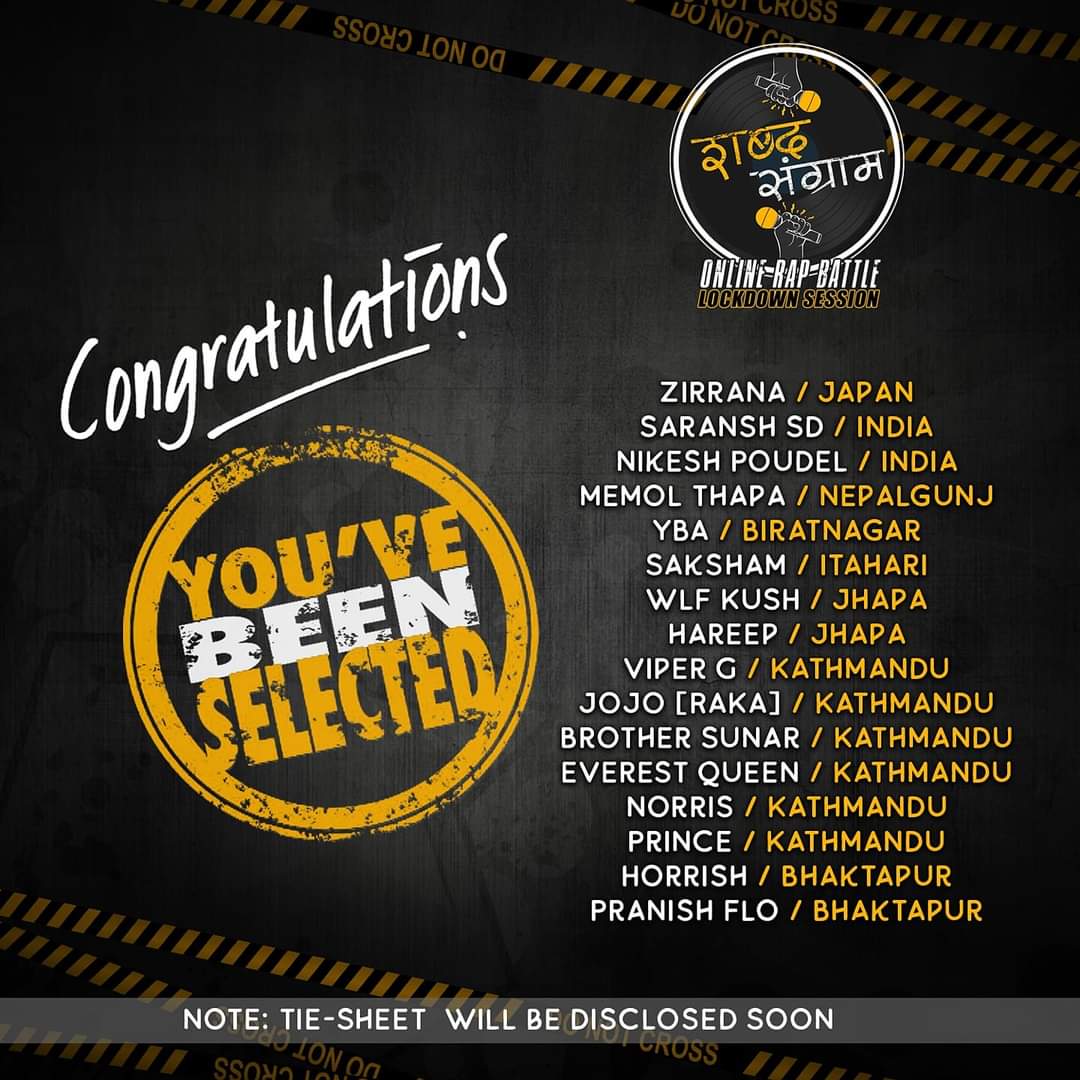
Two competing participants are paired off in the show that is completely virtual. The participants send rap videos and team editors compile them to make an episode. After uploading it on the channel, there is live voting. Sabda Sangram has a website where you can vote for your ‘favorite of the week’. And the person with the most vote moves to another round. This goes on until the finale.
In the first season, the winner got a cash prize of Rs 10,000. The prize has been increased (and how!) in the second season. Now the winner gets Rs. 15,000 in cash, he or she can pursue a Bachelor’s or Master’s degree at IIMS College, in addition to getting Rs 10,000 worth of free service from Vaidurya Dental Clinic and 35mbph free internet service from Vianet.
Although there have been participants from as far afield as Qatar and Malaysia, most of the hype has been created from eastern Nepal, and most of the final contestants are from outside the Kathmandu valley.
“Sabda Sangram gave me an invaluable outlet during the lockdown,” says Ankush Adhikari, also known as WLF KUSH to fans. “It gave me an incentive to write at a time I was feeling demotivated. The exposure I got is irreplaceable.” Adhikari is recognized for winning the first season of Sabda Sangram and has since earned many more fans near and far. At 24, he’s sure of a long rap career that is ahead of him.
His statement is seconded by the finalists of the second season. “Learning how rap battles work, understanding that you can make music from the setup you have at home, and meeting people through the show has built my confidence,” shares Jagrit Pun, 22, from Nawalparasi. Known as REX, Pun will soon be battling for the second season’s trophy. “As I envision my future in music, I’m learning how to produce and build my fan-base at the same time. It’s immensely motivating to see your effort rewarded.”
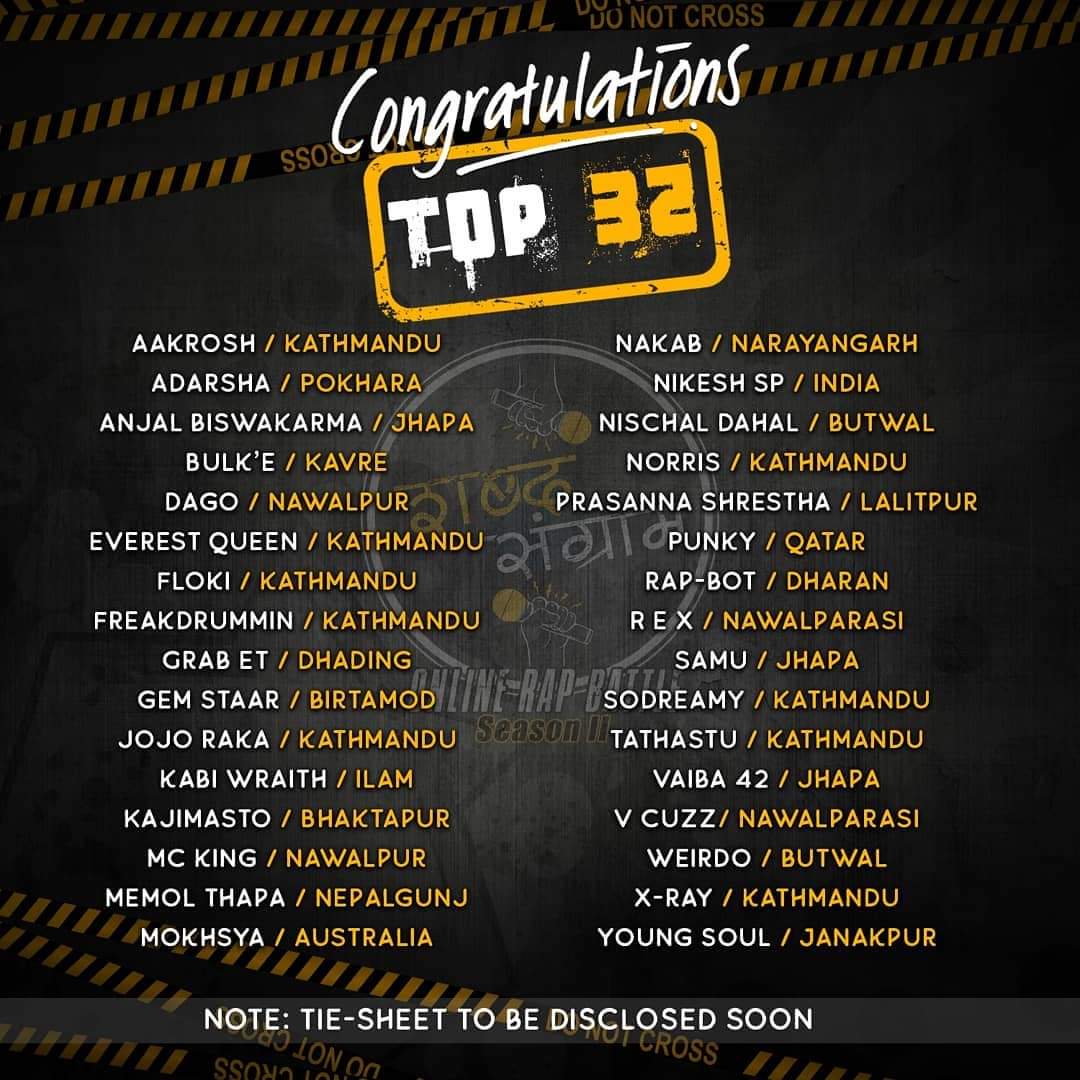
For another finalist, Kabi Wraith, 25, Sabda Sangram was his first introduction to the hiphop community. “I’ve always been more of a classical and rock guy. But this show has pushed me out of my element and forced me to research components I never thought I’d find interesting.” He confesses that he also greatly enjoys the process of rap battles—the writings, the rapping, the beats, the battles, all of it.
But bringing rap back into musical spotlight hasn’t been easy and the biggest hurdle continues to be financial. “We’re funding the show on our own right now,” Pradhananga says. “Sabda Sangram is my baby. And it will go on. But with a big team working with equipment and snacking in restaurants, bill payment is often a problem.
Another problem has to do with the internet. Many participants are from outside the valley as well as abroad, and often their videos don’t arrive on time. As the show runs on schedule, the editing team is then under a lot of pressure.
Right now, Pradhananga is trying to get Sabda Sangram to an actual stage. After finishing the second season, the team will try to air the third on TV.
Making mosaics for musicians
Every journey starts with a small step and for Leena Koich, it began as a hobby five years when she started doing some do-it-yourself designs on her t-shirts and hoodies, using logos of underground Nepali bands.
“I used to go to many concerts back then. So it didn’t take long for my friends to notice all the shirts I wore,” Koich says. “They started asking me to make similar designs on their clothes.” The small favors here and there then spiraled into Koich meeting more and more people interested in her work. Her husband, a former vocalist and guitarist for the band Death Wish, had eased her way into the underground scene, and soon her leisure activity morphed into an online band merchandising and custom manufacture business.
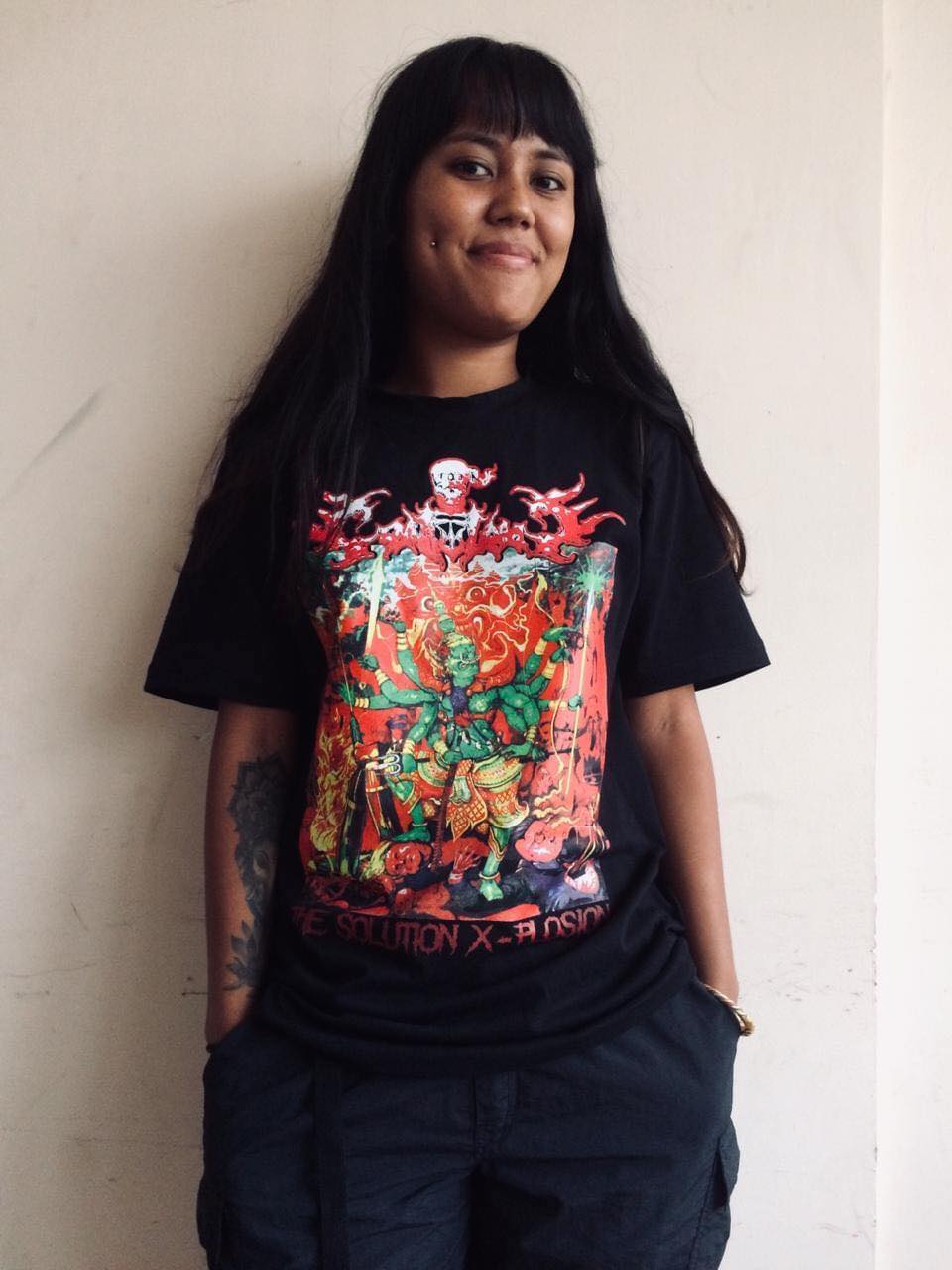
This was back when she was 19. Today, she is 24, and Leena’s Print has become a popular name in Nepal’s underground music scene. In 2017, at her husband’s suggestion, she officially changed her designs from hand-painted to professionally screen-printed merchandise. Bands often go to her when they need quality products bearing their names. She uses a line table she DIYed herself and with a heating press of her own at home, Koich prints designs on everything from sleeves and t-shirts to keyrings to caps.
So far she’s worked with bands like Binaash, The Voices Unheard, Animality, The Screaming Marionettes, Void Turned to Message, Famous Last Wishes, Triangle, Eclipses and Defiant. Koich has also made merchandise for foreign bands like Phlegmicide, Syphilectomy, Confusion, Raped by Pigs, Langdarma and Estrotomy. She caters mostly to underground bands as the more mainstream Nepali bands are not much into merchandizing.
|
The process of manufacture is convenient for everyone involved. Her consumers—musical bands—bring their own designs, logos and vision of what they want. For bulk orders, the online business makes at least 25-50 pieces at one go and 100 pieces at most. Price differs according to design quality. For simple artwork with less color variation, printing price ranges from Rs 500 to Rs 600. But if it’s a complicated artwork, the price goes up to Rs 700. After purchasing, it’s usually the band that takes the responsibility for distribution and marketing. But Koich also advertises it on her own Instagram page, giving musicians good publicity. |
Leena's Print also does custom printing for other clients (the price list for which is in the table alongside).
|
Product |
Price per piece (Rs) |
|
Joggers |
1,800 |
|
Hoodie |
2,000-2,200 |
|
Shorts |
1,300 |
|
T-shirt |
800-1,000 |
|
Long sleeve |
1,300 |
|
Keyring |
150-200 |
|
Large DIY patches |
500 |
|
Small DIY patches |
50 |
Leena’s Print is limited to social media at the moment, and growth has been slow but steady. Obviously, starting a brand has come with its fair share of struggles for Koich, and she is no stranger to rejection. “Even though it doesn’t happen often, sometimes people don’t like the sample,” Koich tells ApEx. “While that’s understandable, it’s disappointing to see their merchandise printed somewhere else while I’m still waiting for their order confirmation.” Silent customers, for Koich, are worse than cruel critics.
Sometimes people's subtle sexist comments upset Koich—it wasn’t something that she had expected at the start. “The underground music scene in Nepal is men-dominated. So when people hear of a woman making merchandise for heavy metal bands, they tend to question product authenticity and quality,” she shares. “It’s not rare to hear people doubt my products and online shop. But I’ve learned to take these remarks in my stride.”
When asked if she’ll ever open a physical off-line shop of her own, Koich says that point hasn’t come yet, although she does aim for it. “I get offers from brands for collaboration, and it would be a dream come true,” she says. “But before that, we need to be financially strong. If I am going to this, I want to do it right.” It’s a challenge though given the small Nepali music industry, and even smaller underground music scene.
It’s only realistic for Koich to wait until her business matures before she ventures into something newer or bigger. Until then, her Instagram and Facebook pages will continue to serve as her business platforms.
Preetica T Mgr: Starting Young, Going Places
Preetica T Mgr can’t remember a time she wasn’t in love with music. At 14, she used to hum songs during classes, always crooned in the shower and was obsessed with music lessons. Her YouTube channel, Preetica T Magar, which she opened in 2015, was a spur-of-the-moment thing but then it would later help her establish her music career.

“I never had big plans for the channel and only dropped a few cover songs here and there,” the singer tells ApEx. “And I’ve only uploaded one original single in my YouTube channel.”
But these days her presence in the music industry isn’t limited to that channel. Since completing her diploma from Kathmandu Jazz Conservatory, she has never looked back. Today, she’s a singer, songwriter, composer and vocalist of the band Voodoo U. She also has singles titled ‘Halka Fulka’ and ‘Baiguni’ under her belt and is gearing up for another one that’s dropping on 3 April 2021.
No stranger to public performances, the singer has gone on to perform on multiple platforms ranging from night gigs at restaurants to touring with Women in Concerts in 2019. So far, outside Kathmandu valley, she’s played on stages in Butwal, Pokhara, Besisahar and Birtamod.
Even with all these accomplishments at a tender age of 22, her creative process remains the same. “I’m always humming new melodies. I write lines in pieces and once they start taking shape, I work on giving them structure,” she shares. “You can’t tell when inspiration is going to hit you. Sometimes I’m watching a movie or am in the middle of a concert and suddenly ideas start flowing.”
|
If you were given a chance to have a sit-down interview with any musician, dead or alive, who would you pick? Lauryn Hill. What genre of music would you say is your favorite? All genres of music are enjoyable but I feel most drawn to R&B. Where do you see yourself ten years from now? Definitely making music, performing more. Just learning more about music and life. Among all the songs you have made, which one is your personal favorite? Each song I’ve written and composed have different vibes to them. But ‘Baiguni’ was the first Nepali song I wrote. The whole process was wonderful even though it took me a really long time. In the end, I was happy with what I had made. You’ve performed on many stages. What was your favorite gig? Recently, my band performed at LOD with Women Rock. The entire time, I felt like everyone onstage was in tune with one another. There was barely any nervousness, and it was a show I’ll remember for a long time. As a woman, what have been your struggles in this industry? There have been a lot. But one that I can’t overlook is the fact that most of the gigs are always held at night. It’s unsafe to be out at that time and families are hesitant to let you stay out late. It’s problematic, especially when you’re working hard to make it as a musician. As a woman, our ideas are often easily disregarded or are only recognized if backed up by a notable person. I also feel like we don’t have a lot of female allies in this industry. What has been your favorite memory from your musical journey? I think it’s usually the small moments that make me the happiest. When the melody and the song come together. When you’re composing a tune that perfectly fits the vibe of the song. That split second of things aligning themselves with each other. Those are my favorite. If you could change one thing about the Nepali music industry, what would it be? I feel like the genres in Nepali music are limited. So I’d add variety to it, I’d allow more style. Who is your current favorite musician? Crush. Do you have any hobbies outside music? I’m a very outdoorsy person. Just walking and swimming make me happy. And I also really like standup paddleboarding. What song do you have on repeat right now? Leave the Door Open by Bruno Mars, Anderson. Paak and Silk Sonic. Who do you think was the most deserving winner at the recently-held 63rd Grammy Awards? Dua Lipa won the Best Pop Vocal Album for Future Nostalgia. I think that was well-deserved. |
Netrakart: Through clear lenses
As children these days are constantly hooked to this or that gadget, their eyes are often weak, sometimes considerably so. Yet this problem with perhaps the most sensitive organs in their body is often ignored.
When Baibhav Pandey, 27, first heard about a young boy being prescribed a negative six vision correction on his very first checkup, he knew there was a problem. “During my school years, I had a bench-mate who always had trouble seeing the board. We used to give him our notes to copy from,” Pandey tells ApEx. “The further back he would be seated in the class, the more he’d squint. This went on for months and we simply considered it normal.”
_20210311132537.jpg)
To this day, ophthalmologists and opticians are generally consulted only when problems go from uncomfortable to unbearable.
It was to tackle this issue that Pandey along with another founder, who’s chosen to remain anonymous, launched Netrakart. Starting out as a simple website for ordering lenses in its planning phase, Netrakart has now evolved into a proper eye healthcare service provider.
What makes Netrakart unique are its three main services—prescription eye-wear orders, home try-on and home eye checkup.
As one of Nepal’s first prescription-based eyewear e-commerce, Netrakart makes buying glasses convenient. With free login on its website, one can simply enter their lens prescription, pick a frame and confirm order. Another noteworthy feature is its impressive range of frames. The collection, sectioned into premium and economy classes, includes typical plastic frames to coveted brand frames from Gucci, Cartier and Tom Ford, with prices ranging from Rs. 300-400 for economy frames to Rs 5,000 or above for premium frames. Likewise, the economy lens consists of simple blue-ray blocking formula while premium lens include products from the likes of Crizal and Hoya.
_20210311132545.png)
Home try-on, true to its name, allows one to order up to five different style of frames and pick the one that fits their facial structure, with the customers getting five days to make a decision. The total price for this service is Rs 25, Rs 5 for each frame.
Following this is perhaps the most notable of Netrakart’s services, the home eye checkup. In partnership with Vision Concern Optical, the company brings an authentic eye clinic to your doorstep. Along with its own assistant, the company sends an optometrist for examination. The assistant carries an equipment bag which includes the trial lens set, ophthalmoscopy, retinoscopy, vision chart and a measuring tape. After the setup, the examination that follows is similar to that in a clinic. There are questions of comfort, talks about vision chart and a prescription at the end, according to requirement. If the examination calls for a hospital visit, Netrakart’s website allows you to book an appointment at Matrika Eye Center.
Inside the Ring Road, the price of home eye checkup is Rs 400 for a person. For more than one person in the family needing examination, it’s Rs. 300 per person. Outside the Ring Road, the price for a single checkup is Rs 600, and for two or more, it’s Rs. 400 per person. This service is limited inside the Kathmandu valley for now.
So far, the biggest struggle for Netrakart has been making customers believe in the authenticity of business. “Many are still hesitant to trust a service that comes from an online portal,” Pandey says. “They question the equipment used, the doctor’s credibility and whether the checkup will be an efficient one.”
Yet there is no denying that home checkup and glasses have been handy at the time of an insidious pandemic.
Visit: netracart.com



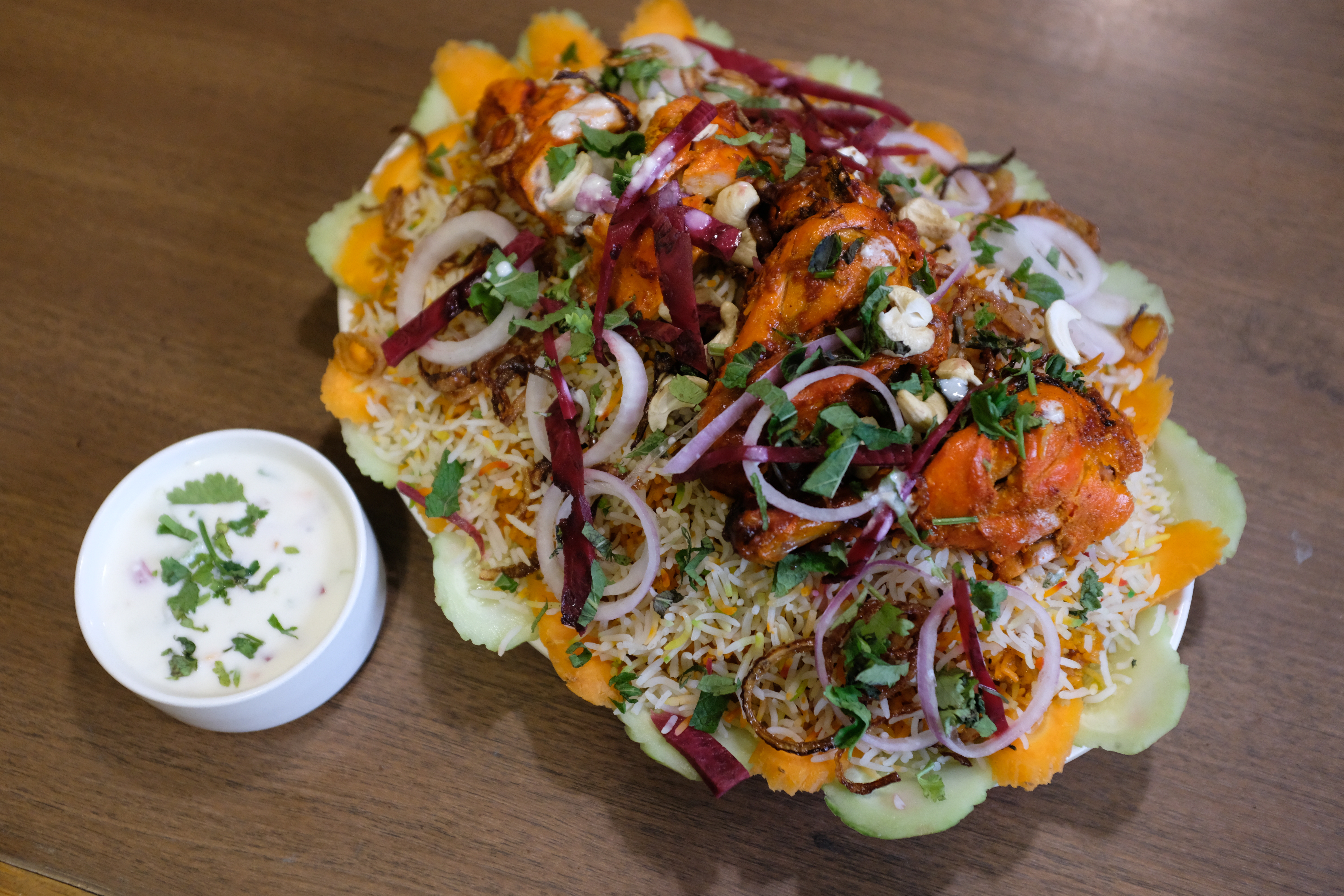
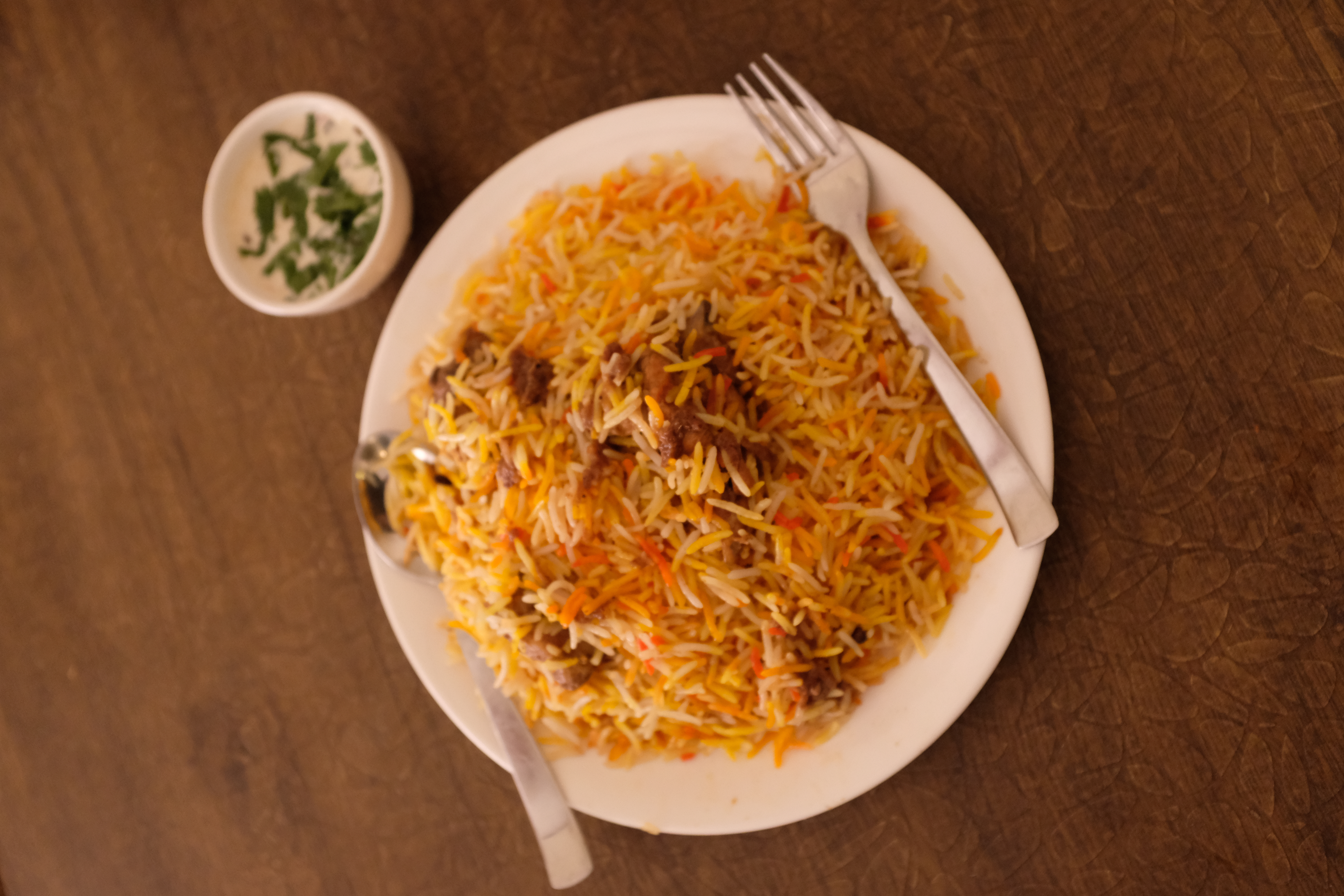






_20210311132541.jpg)




